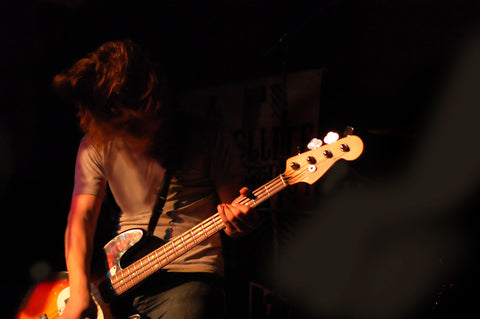-
Audio
-
Guitar
-
Bass
-
Blog
-
SALE
- Financing
- Support
- SINCE 1946
August 26, 2016

Getting into the world of effects pedals can be an intimidating task (and not to mention expensive, too)! There are hundreds of pedal manufacturers and thousands of effects to choose from to help define your sonic identity. If you're just getting started with effects, this quick guide will outline the basic ways to implement some stomp boxes into your arsenal.
Guitarists like U2’s The Edge and Tom Morello from Rage Against the Machine are known for their use of creative use of effects, which play a large part in their respective bands’ overall sound. In contrast, bass players go relatively unnoticed in this regard. That is not to say bassists should not use effects- thoughtful, appropriate use can definitely add a lot of color to your sonic palette. However, special care must be taken to ensure that your effects-laden bass still supports the rest of the band in the mix and does not get lost in it.
The basis of choosing effects is to think about the style of music you are playing and what sound you are going for. A fuzz or distortion effect, for instance, may be totally out of place in a jazz trio but could sound right at home in a three-piece hard rock band and help fill in space during a solo. A flanger effect might sound awesome leading into a chorus but might be overkill if it’s used too often throughout the song.
Of course, there are a multitude of effects out there, and countless variations of the same effect, so in addition to deciding when in the song to kick your effect on, pinpointing the exact type of effect for the job can be a difficult task. Maybe you may feel like a verse could use a little something extra, but are not sure what. In cases like this, or if you have spent years plugging straight into your amp want to get a crash course in using effects, a good starting point is to try out a multi-effects unit. These are helpful in that they allow access to dozens of effects and make it easy to get familiar with each one. From there, you can find what works best for you.
Some bass amplifiers offer built-in effects- Carvin Audio’s BX1500, for instance, offers a built-in compressor and a touch of natural grit if you want it (crank the drive and listen as your tone gets a bit more fur). You’re not going to find any built-in reverb or chorus here like you would on a guitar amp, though!
If you instead want to go the individual effects pedal route, you can head to a local music store or ask an effects-happy guitarist friend if you can borrow his. Keep in mind though that while there are many exceptions, guitar pedals (especially dirt pedals) do not work quite as well on bass as on guitar. Throwing a clean blend into the mix often works wonders for increasing the usability of many pedals on bass by splitting the dry and wet signals, making sure your bass’ low end and punch are not compromised when the effect is engaged.
With every effect you try out, ask yourself – is it contributing positively to the music you’re playing, and not just making it unclear adding noise or taking the attention away from a vocal line or guitar solo. Don’t be afraid to experiment, but remember at the end of the day your job is to lock in with the drummer and lay the foundation for your band.
October 02, 2025
Discover the features and performance that the WG6 Wireless Guitar/Bass System has to offer. The WG6 Wireless Guitar/Bass System is designed to give you the wireless freedom you have been looking for and the simplicity to make your life as a working musician easier. Advanced wireless technology, multiple channel capability, premium audio processors make the WG6 the leader in compact wireless instrument systems. Defined and detailed low frequency response makes this system especially useful for bass players. The WG6 works with both active and passive instruments and is perfect for both electric and acoustic guitar/bass.
March 28, 2025
At any time at any gig, something is bound to go wrong and you may need a tool to get you back up and running. Here are a few basic tools you should bring to every gig.
January 09, 2025
I once asked blues legend Walter Trout why he still plays his well-worn vintage Strat. The technology exists to digitally scan the guitar and make very accurate replicas. His response was he could leave it at home, but then it will never be played. Plus, someone could steal it from his home. At least the guitar is with him and he has the pleasure of playing it. But this may not be the same for everyone.
Sign up to get the latest on sales, new releases and more…
NoFraud Frequently Asked Questions
"Make a joyful noise unto the Lord all of the earth; make a loud noise and rejoice and sing praises. Sing to the Lord with the harp and the voice of the psalm." - Psalm 98:4-5
© 2025 Carvin Audio.
Carvin Corp.
POS and Ecommerce by Shopify
